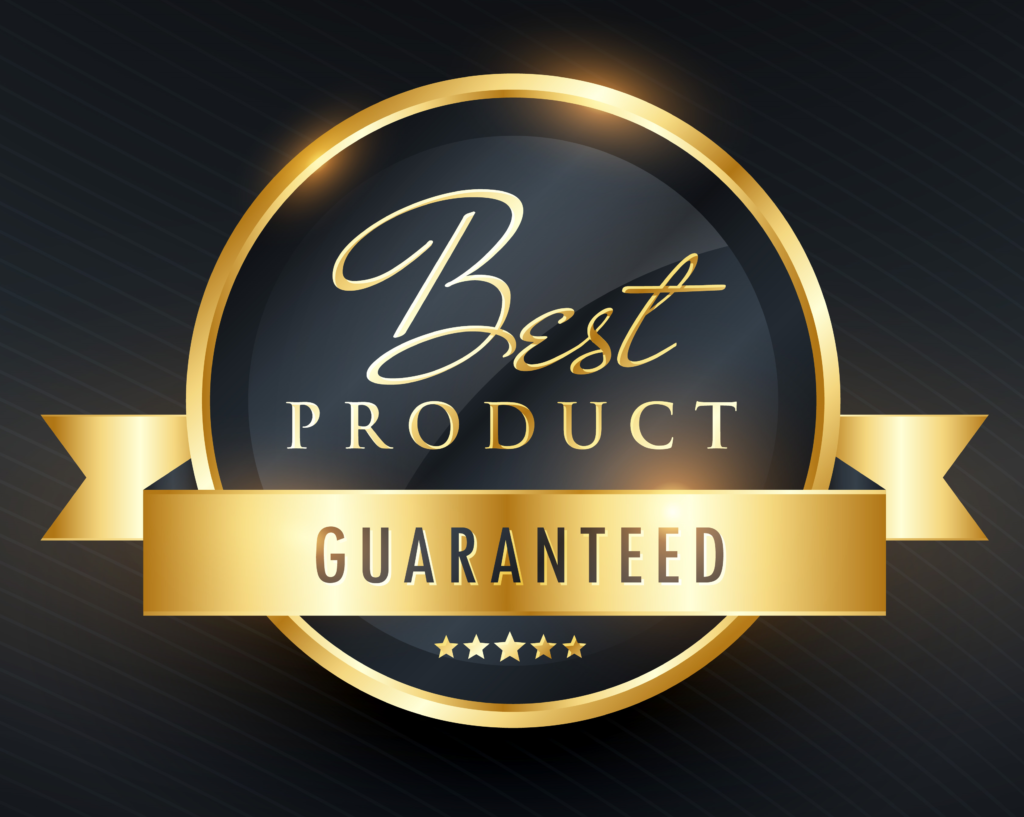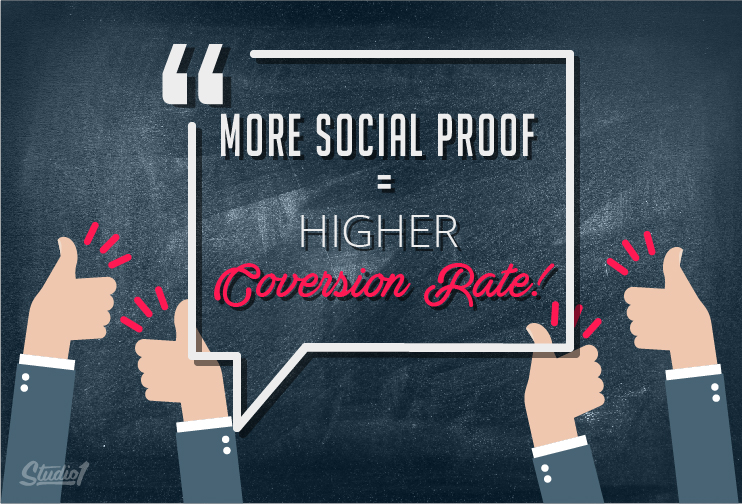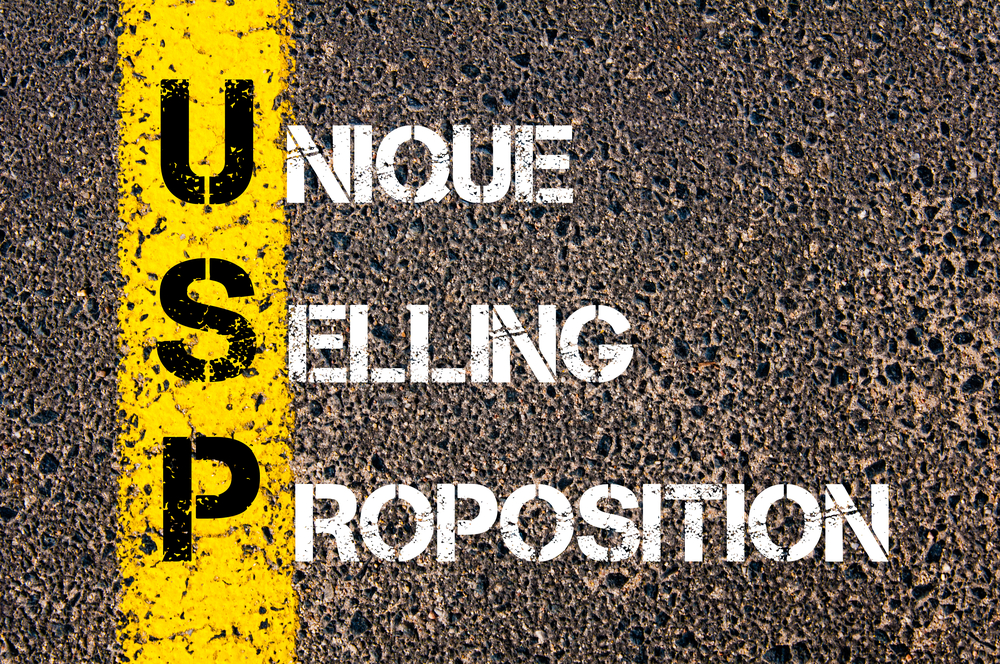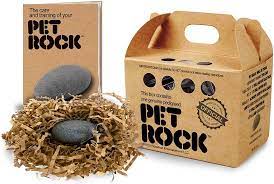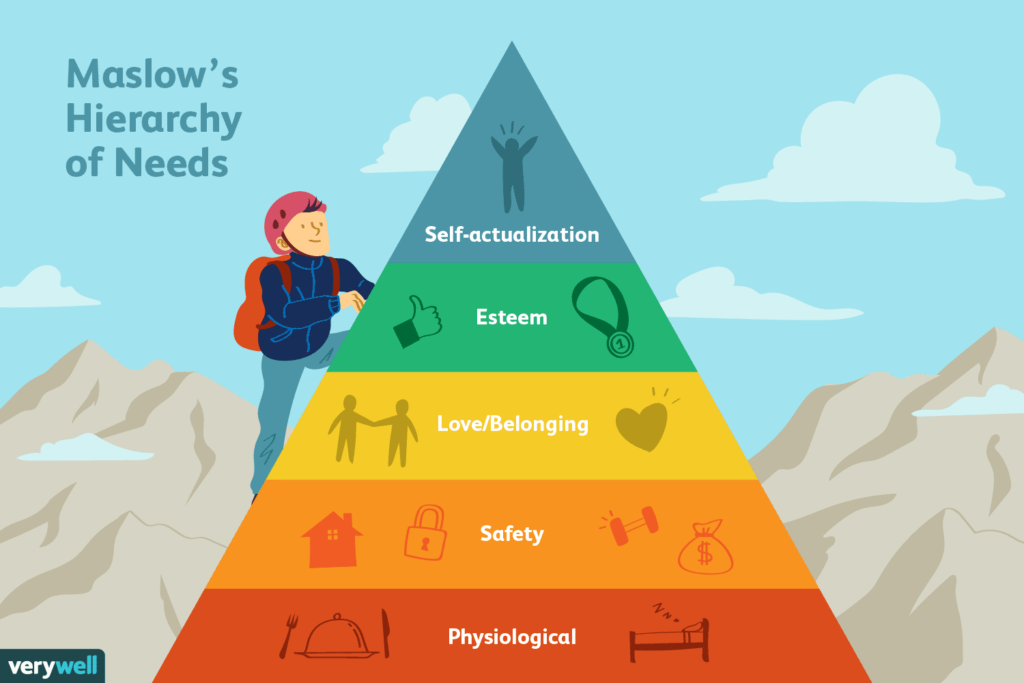Technique #9: Positioning in Copywriting
Article #9 from the series, 10 Persuasive Copywriting Techniques
Topics Covered in This Article
Positioning in Copywriting
What is positioning in copywriting? It’s based on one of the most misunderstood ideas in modern marketing, which I’ll introduce in a moment. First, let me clarify something about positioning in general.
Positioning only applies to prospects in Stage #3 of the Buyer’s Journey. If you’re positioning your brand, product, or service for Stage #1 or Stage #2 prospects, you’re doing it too early.

If you’re doing it for Stage #4 prospects, you’re misdiagnosing which stage your prospects are in. This is why positioning is one of the last two copywriting techniques in this series.
Positioning: influencing your prospect's perception of your product or service in a way that makes it appear 1) superior to alternative solutions and 2) uniquely distinct from direct competitors who offer the same product or service.
The Role of Positioning in Copywriting
In the first four articles of this series, we talked about turning attention into interest, interest into desire, and desire into urgency. The second four techniques focused on keeping your reader engaged, building their hopes, and clearing up their misconceptions. The final two techniques focus on turning urgency into action, and this starts with dissolving these common obstacles:
These are distinctly different obstacles. The first one is self-explanatory. No matter how great your promise is, your sales will fall apart at the last minute if people don’t trust you. Positioning is how you clear this first obstacle.
The second is more complicated and often neglected by salespeople and marketers. It’s when your prospect believes that your product won’t work for them, even if it has worked for other people. If you talk to them on the phone or in person, they might even appear to mistrust you.
But if you ask the right questions, you’ll realize that their doubts are more about their own personal situation than they are about your product or service. In short, the role of positioning in copywriting is to answer two questions:

This is the role of positioning in copywriting. But I’ll say again that positioning is something you only do for prospects in Stage #3 of the Buyer’s Journey.
A Stage #3 Prospect is someone who is sold on your type of product or service and is now comparing you with other brands.
Your job is to dissolve their mistrust of your brand and their insecurities about whether your solution will work for them, and that’s the role of positioning in copywriting. Here are the common symptoms of poor (or non-existent) positioning:
If you’ve ever wondered how some marketers make tons of money while you have to fight for every dollar you earn, this is most likely why. The good news is that once you get your brain wrapped around this technique, EVERYTHING you do becomes easier and more profitable. Especially if you’re selling a product or service that has a broad appeal or a lot of direct competitors.
Examples of Positioning in Copywriting
Positioning is all about selling your prospect on three things:
Together, these three selling points will dissolve your prospect’s doubts about your brand, and mitigate their personal insecurities about whether your product or service will work for them. Let’s check out an example for each one. Then we’ll unpack some strategies for applying all three in your copywriting messages.
Positioning in Copywriting: Example #1 (Relevance)
Relevance is how you answer this question:
“Is this the best solution for someone like me?”
For B2B prospects, the question will be more like:
“Is this the best solution for a company like ours?”
The key phrases in the above questions are “someone like me” and “a company like ours.” Remember, some prospects will doubt whether your product or service works. Others will doubt whether your product or service will work for them. While Relevance answers both objections, it focuses mainly on the second one.
For example, let’s assume your Buyer Persona is a physically active man in his 50s suffering from severe foot pain due to frequent gout flareups. He is health conscious and mistrusts prescription medications and other conventional medical interventions. He is especially averse to the idea of getting surgery and prefers natural, non-invasive treatments. The following example shows how you might position a product for this audience:
3 Reasons We’re The Most Popular Natural Gout Treatment provider for Men in Their 50s
Reason #1: It’s YOUR Treatment
Something changes when a man turns 50.
Diets, workouts, and pain treatments don’t work as they did in your 30s. That’s why our all-natural gout treatment was custom-made for active men between ages 50 and 65. This means FASTER, SAFER, and LONG LASTING relief from the crippling pain of sudden gout flareups.
You’re getting a treatment custom created with YOU and your body in mind. That’s what makes us the most popular provider of all-natural gout treatments in America.
Reason #2: All Natural AND Doctor Recommended
There are only a handful of all-natural gout treatments on the market.
They’ll all tell you that their product is made with all-natural ingredients. What they won’t tell you is whether those ingredients are also cut with trace amounts of chemicals they are not required to list on their labels.
What’s the point in an “all-natural” product that smuggles in a cocktail of potentially carcinogenic chemicals?
Some claim that their product is “doctor recommended.” What they won’t tell you is whether those doctors were paid a commission to promote the product to their patients.
Why trust a recommendation from someone who makes money selling the product?
Reason #3: Our LIFETIME Satisfaction Guarantee
We’re 100% confident that you’ll love our product, and order again, and again, and again. Even if you’ve tried dozens of treatments and had zero success with any of them.
In fact, some of our happiest customers tried dozens of gout treatments before they discovered us. After 30 days of using our product, they were relieved to discover that they wouldn’t need expensive surgery or prescription medications. Try it for 30 days, and see for yourself.
If you’re unhappy with our product at ANY time after purchasing it today, just send us the empty bottle and ask for a refund. We’ll also pay for your next gout treatment product!
We’re not worried about losing money. Our refund rate is less than one percent!
This is a LIFETIME guarantee.
Here’s how to order…
I’ll focus my comments on two types of relevance used in the above example:
These are different than Semantic and Emotional Relevance, which we covered in the first few articles of this series. Demographic relevance, for example, focuses on demographic details that your past (or existing) customers have in common with your reader.
For instance, notice how the example above uses statements like “…something changes when a man turns 50” and “…diets, workouts, and pain treatments don’t work as they did in your 30s” to communicate with my reader in a way that empathizes with his life experience. These are examples of demographic relevance.
I’ve also used statements like “…the crippling pain of sudden gout flareups” to empathize with his experience of the problem and its symptoms.
The statements like “…some of our happiest customers tried dozens of gout treatments before they discovered us” empathize with their experience of the problem and their past disappointments with other products. Most importantly, I used statements like “…they were relieved to discover that they wouldn’t need expensive surgery or prescription medications” to relate to their bias against surgery and pharmaceutical drugs, and preference for all-natural health solutions.
These are all examples of psychographic relevance. Together, these two types of relevance answer this often unspoken objection:
“Is this the best solution for someone like me?”
This is how demographic and psychographic relevance begins to dissolve your reader’s fears about their situation being too complex or unique for your product or service to help them. That’s the first rule of applying positioning in copywriting.
Positioning in Copywriting: Example #2 (Superiority)
Superiority is how you answer this question:
“How do I know this product/service works?”
The answer to this question boils down to four factors (listed from most important to least):
In the following example, our reader is a business owner whose tax records and payroll are a mess because he simply hates dealing with such things. He has Libertarian-leaning political beliefs and resents the IRS’s constant demands on his time and money. He believes that a good CPA should share his values and help him keep more of what he earns. He finds a CPA whose website copy reads like this:
Are You tired of being “legally robbed” by the iRS?
Do you feel like most CPAs only want to nag and needle you about complying with the IRS and playing by the “rules?”
Do you feel like your tax savings are maxed out and that you just have to pay what the IRS demands of you?
That’s how a lot of my clients felt before finding me. But what they’ve found is that hiring me is the fastest and least time-consuming way to gain a powerful ally in their battle to keep more of their money.
Like you, I’m an old-school unapologetic American entrepreneur. I believe small businesses are the true heart of the American economy. That’s why I hate seeing you forced to hand boatloads of your hard-earned money to an irresponsible and incompetent government.
My goal is to help you:
You could be saving 30% or more on your taxes by the next quarter, without long meetings, even if your tax records are a mess and you don’t know where to find everything.
When you hire me, I guarantee to maximize your deductions quickly, and without distracting you from running your business. Just like I did for these business owners:
— SECTION HERE WITH CLIENT TESTIMONIALS —
join My Alliance of Happy Customers
These are just a few of HUNDREDS of entrepreneurs who have put MORE money in their pockets, simply by keeping me on their payroll.
Other CPAs might promise you the same results, but what they WON’T tell you is whether their clients are actually getting them!
I’ve worked with over 5,000 entrepreneurs across 102 industries. I’ve saved my clients a total of more than a BILLION dollars over my 30-year career.
So why trust your financial future to someone without a PROVEN track record, when you can hire a fellow liberty-loving citizen who knows how to keep the IRS off your back?
Notice how I demonstrated both Relevance, and Superiority in this example. I used Dog Whistle Marketing by saying “‘Legally Robbed’ by the IRS,” and “…old-school unapologetic American entrepreneur.” I said I believed that small business entrepreneurs are the heart of the American economy, and I called the government irresponsible and incompetent.
These are appeals to psychographic relevance using Dog Whistle Language. They mean nothing to people outside my target audience, and might even seem offensive or over-the-top. But for my Buyer Persona, they’re loaded with meaning and value. Moving on to Superiority, notice how I addressed these three points:
The only point I’m missing is expert endorsements. I’d address this by including some positive reviews and/or endorsements from public figures who my clients were likely to know, love, and respect. This might include Conservative or Libertarian politicians, authors, political activists, or other public figures.
These endorsements would demonstrate both Relevance and Superiority for my target market. Now, we’ll add the third and final ingredient of positioning in copywriting.
Positioning in Copywriting: Example #3 (Uniqueness)
Uniqueness is how you answer this question:
“Can I get the same thing somewhere else?”
This is the most important part of positioning in copywriting. It’s also the most widely neglected and easily misunderstood. It starts with finding your Unique Selling Proposition, which is defined as:
USP: (USP) the one thing that makes your brand, product, or service uniquely superior your competitors.
Your USP is the one thing that makes your brand, product, or service uniquely superior to your competitor. The worst (and sadly the most common) attempts to define a USP sound like this:
These are not Unique Selling Propositions. They’re vague cliches that circle directly back to the question they’re supposed to answer:
“Can I get the same thing somewhere else?”
You’re convinced that your product or service really is better than competitors. Your existing customers probably are too. But your prospects haven’t used your product or service yet. They have no first-hand experience as to whether you’re telling the truth or what you even mean by vague statements about “quality,” “service,” or how much you “really care” about your customers.
Your USP shouldn’t require your prospect to know something that only you and your existing customers can know. It shouldn’t even try to convince them that you’re better. It should explain how you’re different in a way that adds value for them. Here are three rules for defining your USP:
Here’s a simple example of a USP that does all three of the above. This is based on the same Buyer Persona and offer we used in the previous example:
Here’s a Promise No Other CPA Can Make You
During my 30 years in business, I’ve discovered and tested 77 checkpoints EVERY business tax return should undergo before being submitted to the IRS.
Any one of these checkpoints could uncover something that saves you from being robbed at tax time or subjected to an intrusive, time-sucking tax audit.
I keep a hard copy of this checklist in a safe in my office, and another xeroxed copy in a safety deposit box. I’ve never shown it to anyone. That’s why I’m 100% confident that no other CPA can offer you what I can.
In the first paragraph of this example, I make a SPECIFIC claim about how I deliver my service. In the second paragraph, I promise a specific BENEFIT to my prospect. In the final paragraph, I explain why my service is UNIQUE in a way that my competitors can’t duplicate. If you’ve nailed the first two points of positioning (Relevance and Superiority), this simple USP formula will position your product as the absolute best choice.
How to Apply Positioning in Copywriting
There are three ingredients to applying positioning in copywriting:
Relevance starts with defining your Buyer Persona using the Buyer Persona exercise and the related Data Groups exercise from earlier in this series. This should be the foundation of all your copywriting and marketing efforts. The more you know about your Buyer Persona, the easier it will be to answer this question:
“Is this the best solution for someone like me?”
Once you’ve uncovered the Demographic and Psychographic details of your Buyer Persona, make a list of Dog Whistle words, phrases, and concepts to include in your sales copy. Your company story (or Hero’s Journey Story) is another important ingredient for communicating Relevance. This is the first ingredient of applying positioning in copywriting. It should also be the starting point of all your marketing efforts.
The next ingredient is Superiority, which involves four things:
These four ingredients will answer this question for your prospects:
“How do I know this product/service works?”
I recommend treating review and endorsement collection as a part of your ongoing marketing efforts. You should always be reaching out to your existing customers to ask for reviews. You should also make a list of a dozen experts or influencers in your industry and reach out to them until they either respond or ask you to stop.
When reaching out for expert endorsements, don’t use email or social media. Use physical mail. Also, don’t ask for their endorsement right away. Powerful people never approach other powerful people by asking for things. They do it by offering something mutually beneficial.
If you don’t have money, influence, or connections to offer, you can still offer recognition and respect. Write a book or a printed newsletter and either quote them in it or write a review of them or one of their books, lectures, or products.
Stick this newsletter or book into a physical envelope, bookmark the place where you wrote about them, and mail it to them with a handwritten note saying something like, “[NAME], thought you might like to see this.” If you’re writing a book, send them the manuscript before you publish it with a note that says, “[NAME], I paraphrased your work on page [PAGE #]. Please review and make sure I’ve represented you accurately.”
Public figures are constantly misrepresented, and resent it deeply when someone misquotes them or distorts something they said. Asking a known expert to review and approve your work in advance will win their respect and likely their endorsement or even their friendship.
If you do a good job communicating Relevance and Superiority, your final job is to define and clarify your Unique Selling Proposition. This is absolutely the #1 secret to mastering positioning in copywriting.
Mastering Positioning in Copywriting
The ultimate goal of your USP is to positively shape your prospect’s perception of your product or service, and you do this by changing their perspective. By changing their perspective, you’ll change the way they value your product or service, and that changes everything. I call this Angle Selling. Here are three classic examples of Angle Selling.
USP Example #1: The Pet Rock
Gary Dahl was a copywriter who sold ordinary rocks by getting people to see them as pets. That was in the 1970s, yet people are still buying and collecting pet rocks today.
By changing our perspective of ordinary rocks, Gary Dahl brilliantly changed our perception of their value. You can do the same thing by changing the angle from which your prospects see and evaluate your product or service.
USP Example #2: Blublocker Sunglasses
Blublockers are sunglasses. But their original ad (and corresponding infomercials) literally said:
“They look like sunglasses.”
The ads and infomercials for Blublockers didn’t position them as mere sunglasses. They positioned them as a solution for clearer vision and better eye health. Their angle is still working today. Here’s a statement from their website:
“We’ve received several letters from people who were in serious car accidents who would have been blinded had it not been for their shatter-resistant BluBlocker sunglasses.”
And another…
“Blue light focuses in front of the retina, which is the focusing screen of your eyes. The remaining colors focus on the retina. So when you block blue light, objects tend to appear sharper and clearer. And squinting is dramatically reduced. Squinting is often the cause of wrinkles around the eyes. BluBlockers block those rays that cause squinting and the results are less wrinkles.”
Notice how these sunglasses are positioned as tools for fighting wrinkles, protecting your eyes, and even preventing blindness. As of 2022, Blublockers have earned over $60 million in total revenue and average about $186,000.00 per employee in yearly revenue.
USP Example #3: The George Foreman Grill
George Foreman was a champion boxer and the personality behind the George Foreman Grill. The grill was originally marketed as a Taco Maker. When it bombed, a brilliant entrepreneur from Chicago repositioned it as a grill for cooking low-fat foods and eating healthy. He and George Foreman made millions, but that’s not all.
Their marketing campaign changed people’s perception of the product and of George Foreman.
Here’s a quote from an article in Business Week Magazine:
“In 2002, George Foreman was in Memphis working as a boxing commentator for Home Box Office Inc. when he ran into a group of preschoolers walking down the street. Their teacher explained to the children that Foreman had won the gold medal in heavyweight boxing at the 1968 Olympic Games.
One little boy refused to believe it. ‘That’s the cooking man!’ shouted the tot, referring to the former boxer’s promotions of his George Foreman grill. Says Foreman, laughing at the memory: ‘They don’t even know me as the champion anymore.’”
The success of this product had less to do with George Foreman’s celebrity status and much to do with how the product was positioned as a solution for healthy living.
In fact, dozens of celebrity-promoted food products have failed so badly that Paul Newman had to use his own fortune to launch his “Newman’s Own” brand. Newman’s brand is another good example of Angle Selling, being promoted as an ongoing worldwide mission to “…nourish and transform the lives of children who face adversity.”
How to Find Your USP
The three examples above have one thing in common. They tie the product to a larger lifestyle benefit which, to the ordinary person, would seem to have nothing to do with the product or even what it does. This is especially effective when the lifestyle benefit is tied to one or more of these universal human desires:
Answer this question first. Then, define the one thing about your product or service that makes it effective in delivering this. Make it something that your competitors cannot offer without violating a patent or stealing one of your trade secrets. You might even consider patenting this feature of your product or service.
If you can’t find anything unique about your product or service, you’ll want to improve it until you have something that your competitors can’t legally duplicate. Finally, use the Typical Day exercise from my Buyer Persona article AND the Ladder of Abstraction from my Hypnotic Copywriting article to write out your promised lifestyle benefit in vivid detail.
Combine this with the ingredients of Relevance and Superiority, and you’ve got the perfect formula for mastering positioning in copywriting. We have now covered all the persuasive copywriting techniques for turning attention into interest, interest into desire, and desire into urgency. The final article in this series shows you how to turn urgency into action and close the sale.


